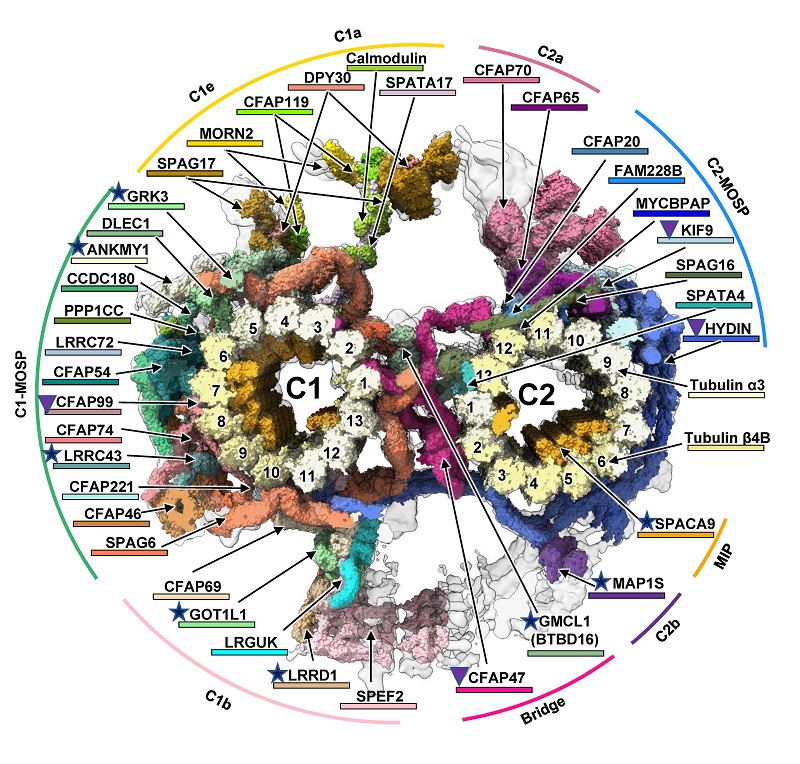
In a study published in Cell Research on June 5, a collaborative research team from the Institute of Biophysics of the Chinese Academy of Sciences, Beijing Normal University, Chongqing Maternal and Child Health Hospital, and the University of Science and Technology of China has, for the first time, resolved the high-resolution in situ structure of the central Apparatus (CA) within the axoneme of mammalian sperm.
CA is a central part of the axoneme, the microscopic engine that powers the movement of motile cilia and flagella. These structures are not only essential for sperm to reach and fertilize an egg but also play vital roles in embryonic development, brain function, and respiratory health. Until now, however, the intricate architecture and function of the CA remained poorly understood, particularly in mammals.
In this study, the researchers elucidated the assembly patterns of the C1 and C2 microtubules and their associated proteins, revealing the pathogenic mechanism by which structural defects in the CA can lead to asthenozoospermia (reduced sperm motility).
Using state-of-the-art in situ cryo-electron tomography combined with AlphaFold2 and other AI-based protein structure prediction technologies, the researchers overcame major technical challenges in sample preparation, data acquisition, and image processing. They successfully resolved the high-resolution in situ architecture of the CA in mouse sperm axonemes, achieving a local resolution as high as 5.5 Å.
The study provides a detailed view of the assembly mode of the C1-C2 microtubules and their associated inner and outer binding proteins. The researchers constructed a structural model comprising 466 protein subunits and identified 39 distinct component proteins, including eight newly discovered CA proteins: GRK3, ANKMY1, LRRC43, GOT1L1, LRRD1, MAP1S, GMCL1 (BTBD16), and SPACA9.
This study marks the first comprehensive elucidation of the assembly mechanism of the CA in mammalian sperm and systematically explains how defects in CA proteins can impair flagellar motility.
By integrating high-resolution in situ structural data with animal models and clinical findings, the study offers new insights into the precise diagnosis and potential treatment strategies for asthenozoospermia.

Schematic Diagram of the In Situ Structure of Mouse Sperm Axonemal Central Apparatus (Image by SUN Fei's group)

86-10-68597521 (day)
86-10-68597289 (night)

52 Sanlihe Rd., Xicheng District,
Beijing, China (100864)

